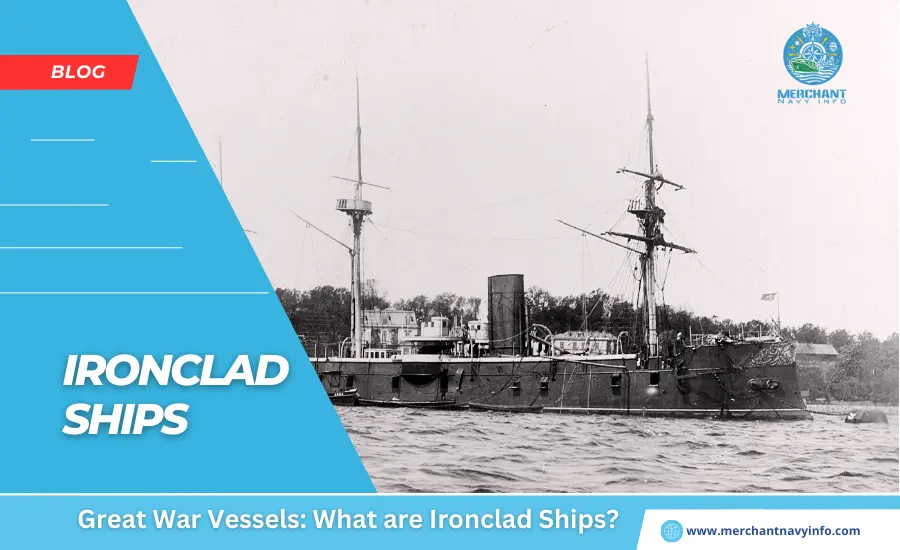
The American Civil War in the mid-19th century was the setting for many great events. This list of revolutionary highlights and achievements focuses on the unique development and use of warships known as “ironclad ships. The introduction of armored warships began in France in 1850. However, the Civil War revolutionized the concept and paved the way for post-Civil War warship construction.
Ironclad Features and Special Features
The hulls of Civil ironclad warships were made of iron shields. Which clearly distinguished them from the wooden ironclad ships commonly used at the time. In addition, armored ironclad ships were powered by steam, which increased their speed when moving underwater. Iron protective shield made enemy ammunition almost impenetrable if it hit the hull. Additionally, some of these Civil ironclad warships. Were built specifically to attack enemy ships and disable them from completing their missions. Civil War ironclads are basically divided into her four main types and can be represented as follows:
- Conventional-hulled ironclads, as the name suggests, had the design and hull of conventionally built ironclad ships of the time.
- Scow. It had a flat bottom and was generally used on flat parts of rivers. Certain scows were designed in the form of catamarans for better movement through the water.
- Surveillance ship. It had a double hull to protect it from enemy ammunition in the sea. The upper hull was shaped like a raft. Giving the ship stability on the water, and the second hull housed the engines and ammunition needed for combat. The ships originally built had separate double hulls, making them vulnerable to enemy combat. However, in later years this flaw in the construction of models of these armored ships was successfully corrected.
- Casemate was a Confederate-designed ironclad. The casemate ship was designed similarly to the scow and monitor ships. But was much more effective than these two ship models.
Monitor & Virginia
Before delving into the design and construction of the warship. It is necessary to understand the dynamics of United States geography at the time of the Civil War. The country’s shipyards were concentrated in Union-controlled areas, while Confederate states literally lacked shipyards. While the Union was quick to adapt to the innovative technology of armoured warships, the Confederacy was slow to adapt due to a lack of shipyards. However, after careful consideration, the Confederate States decided to turn to international parties to address the shipyard shortage.
However, the first ironclad the Confederacy acquired in the Civil War was the Merrimack. The Merrimack was an abandoned ship abandoned by Union Marines, repaired and refitted by Confederate shipyards, and renamed CSS Virginia. By the time the overhaul in Virginia was completed, the Union had nearly seven ironclads of her own, which was nearly seven times her strength and capability of the newly acquired Confederate ships. In fact, the first ship-to-ship battle of the Civil War took place between her USS Monitor and her CSS Virginia in 1862 and holds a special place in Civil War history. This battle of ironclads was not about the superiority of one ship over another, but rather the technology of the ships
Difference
Union ironclads were very different from their Confederate counterparts. The former ships were used to attack Confederate walls and were therefore always moving in the river, while the latter ships were used on riverbanks to prevent Union forces from attacking walls or ships. Therefore, the role of an armoured coalition can be summarised as being a strategically placed defender rather than a strategically placed attacker.
After the Civil War
Warships were widely used during the Civil War, but began to decline in popularity in the late 18th century due to advances in warship construction technology. This led to a gradual decline in the use of ironclads, and by the mid-20th century ironclads had become part of a rich history of naval operations. The American Civil War may have left a stain on this country’s productive history. However, during this difficult time, our people showed a like-minded attitude towards technological development, which inadvertently resulted in the country moving forward together and with purpose. This positive attitude towards the devastating course of the civil war makes it unforgettable not only for its negative reasons.









